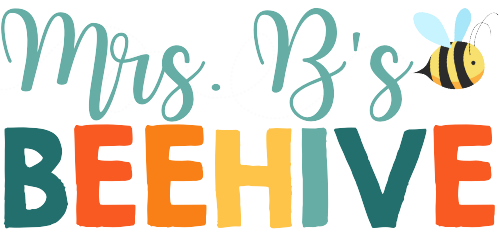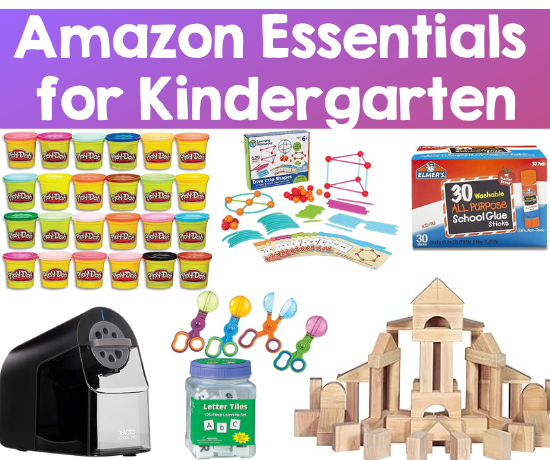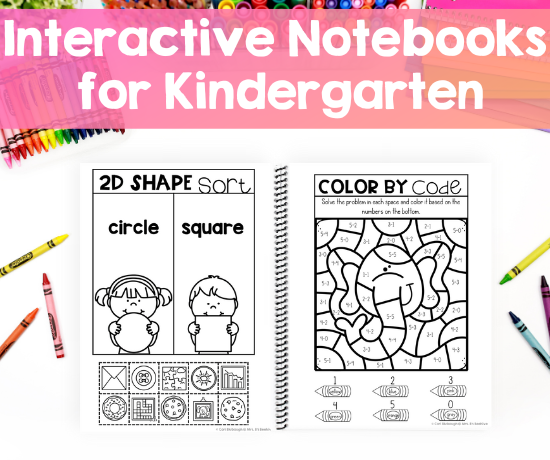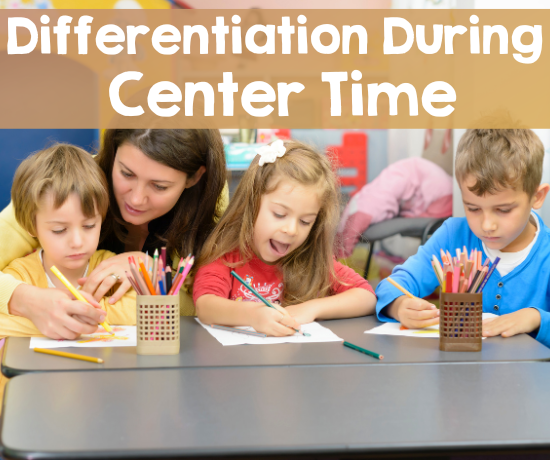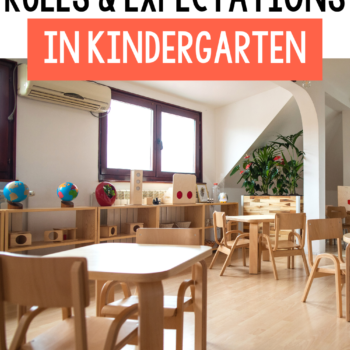Classroom rules. Whether you love them or hate them, they have to be covered in the classroom. Talking about classroom rules in kindergarten doesn’t have to be something that is a painful experience, though. There are lots of fun and engaging ways to cover classroom rules and expectations for your classroom.
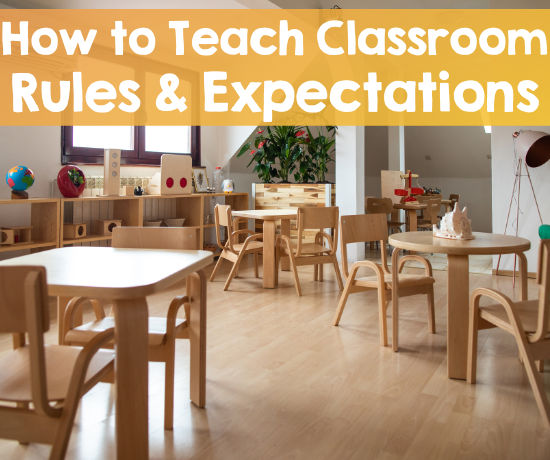
Why do we need classroom rules for kindergarten?
Teachers, parents, and any person who has been inside a classroom at any point in their life knows what a classroom would look like with no rules.
Rules help students know what behavior is acceptable in the classroom and what is not. By covering the rules in your classroom with students, you eliminate the unknown of what is okay in the classroom.
Students know exactly what is expected of them and what is not allowed in your classroom. Sometimes rules seem like an unnecessary thing to talk about, but in a classroom, they are essential.
What happens if you don’t have rules or the students don’t follow the rules?
Some of us have had the distinct disadvantage of experiencing a classroom with few or no rules. I have a friend who is a substitute teacher. She has always said that she will try any classroom once as it pertains to subbing.
One of the worst days she ever experienced was in a classroom where no one followed the rules. It was an early-out day, a day with district testing my friend wasn’t qualified to give, and a school in a rougher neighborhood. A seasoned sub, my friend thought she knew what was coming.
She was wrong. These kids didn’t follow the rules at all. Without being asked, the principal took the initiative of sitting in the back of the class so my friend could teach for the two hours allotted for teaching that day due to the crazy schedule. Needless to say, she vowed she’d never sub again in that classroom.
Rules are important, but enforcing them is even more important.
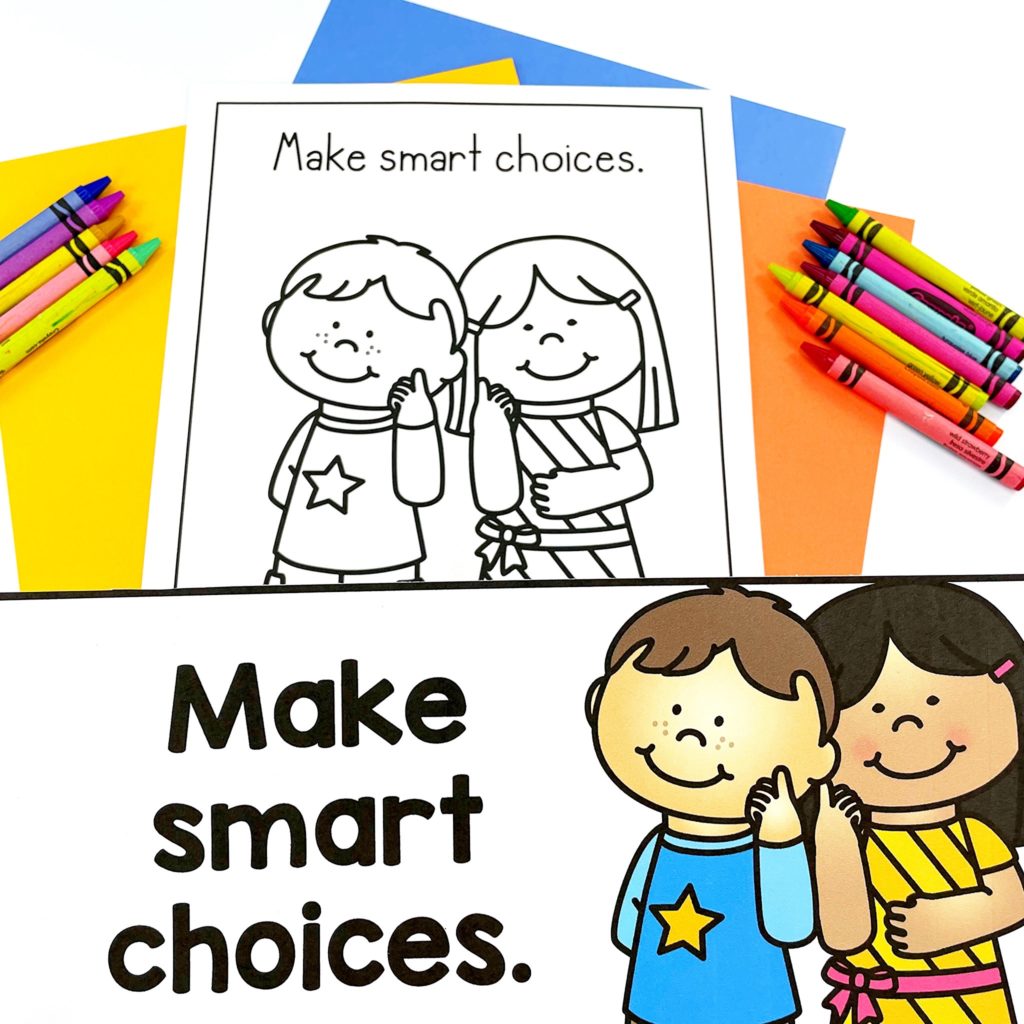
How do you come up with the rules for your classroom?
When deciding rules for your classroom, you can go about it one of two ways. As the teacher, you can come up with the rules on your own and inform your students about the rules.
This way is effective and students know what is okay and what is not okay in your classroom. The other way I know of making rules for your classroom is to include the students in making the rules for the classroom.
This is honestly my favorite way because the students are getting some ownership in the classroom and hopefully they will follow the rules better. The students come up with great ideas, but if there is a gap in the rules, you can always guide them to talk about a rule that’s important for you to have as classroom rules and expectations.
No matter who comes up with the rules, don’t make them too complicated. Simple and easy-to-understand rules are best. Once you make a list of your classroom rules, they should be posted so everyone can see them for an easy reminder.
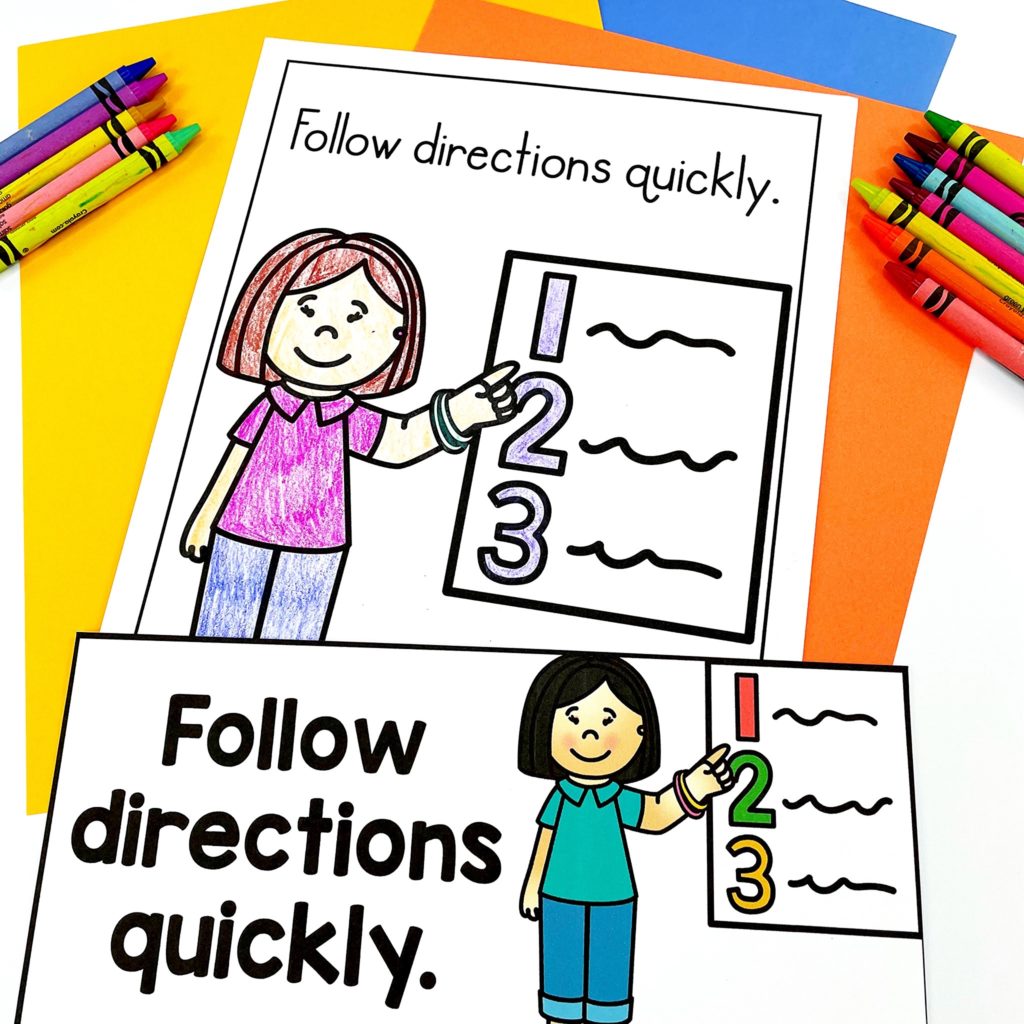
Ideas for great classroom rules:
Be respectful. Help others. Be kind. Use inside voices. Raise hands. Walking feet. Be a good listener. Make smart choices. Listen to the teacher. Be safe. Hands to yourself. Take turns.
Do you need help with a great classroom rules poster to print for your classroom? You’re in luck! I have a resource specifically designed for you. It is an editable, set of Classroom Rules Posters and Coloring Pages.
This easy-to-use resource gives you great options for simple classroom rules to post around the classroom, but it also allows you to edit the rules to fit your classroom rules and expectations.

How can I teach classroom rules and expectations?
My advice is to teach one rule a day. Introduce the rule, read a book that illustrates the rule, then come up with a list of how to exemplify the rule for your students.
Lastly, have the students color the rule worksheet to help them remember the rule from the Classroom Rules Posters and Coloring Pages. As this is mostly done in the first week of school, you are able to informally assess your students’ fine motor skills and attention span with the coloring activity.
Remind your students of the rules often and hold them accountable to the rules.
Post the rules in an easily accessible place and review them every day as part of your morning routine. Your students will memorize the classroom rules and expectations and you can use them as part of your classroom management.
My number two rule was to listen when someone was speaking. When the students started to talk over each other I could just say, “What was rule #2 again?” They would repeat it back to me and be reminded that only one person should be talking ab a time. It worked pretty well to stop the problem!
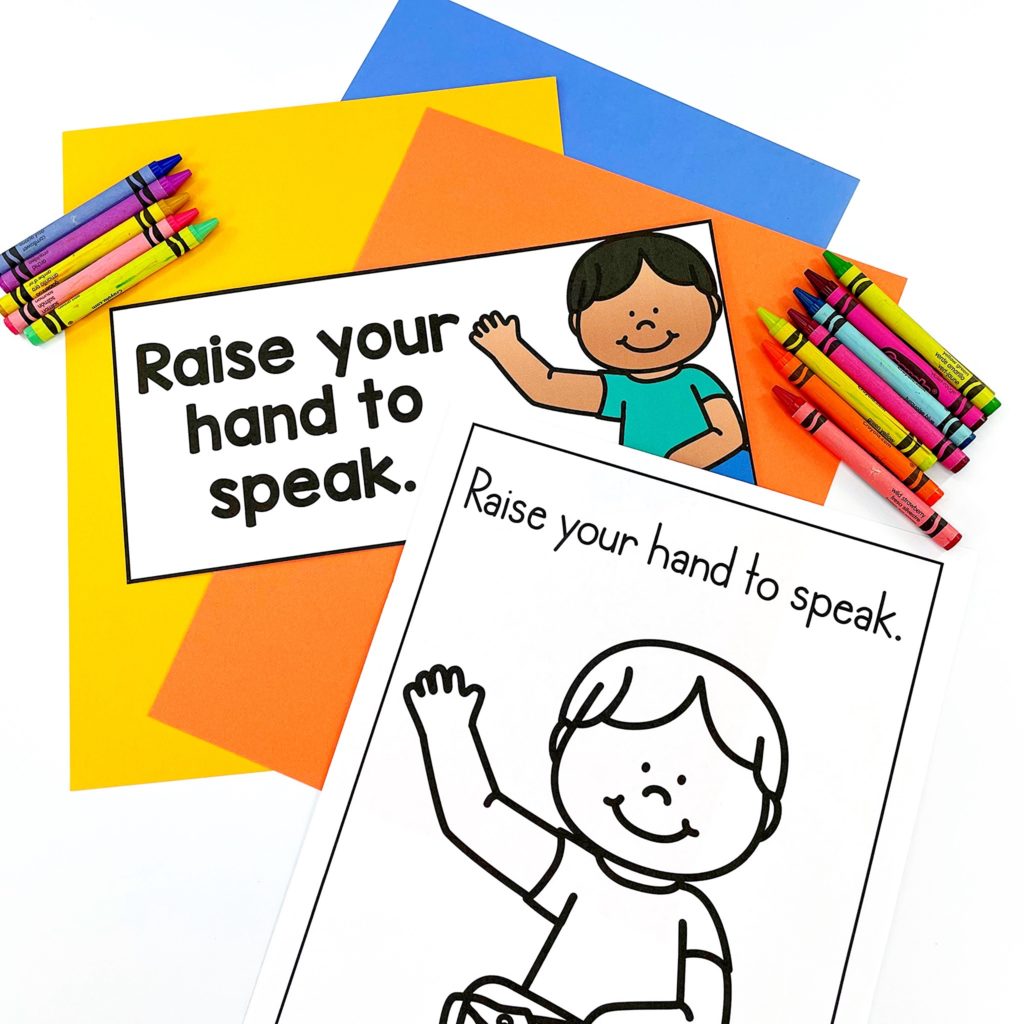
More ideas for classroom rules, posters, and labels!
Besides the all-important classroom rules posters that should be in your classroom, there are lots of great posters you can place around the room to remind your students of rules and procedures. By using the Classroom Posters and Labels Organizational Systems and Decor Bundle, you will be set for all the organization your classroom needs. Classroom centers, jobs, morning greetings, and schedules are all covered, and many more.
Are classroom rules and expectations necessary?
Of course, they are. They are a necessary part of running a classroom. That doesn’t mean that discussing and enforcing classroom rules and expectations has to be hard or no fun.
Classroom rules in kindergarten should be simple and easy to follow. Help enforce classroom rules by teaching them slowly so that students understand them and help your students with gentle reminders.
Classroom rules and expectations really are there for all of us to function better in the classroom. Which rules are your favorite classroom rules in kindergarten? For more ideas on classroom management, make sure you take a look at my Behavior Management Archives!
